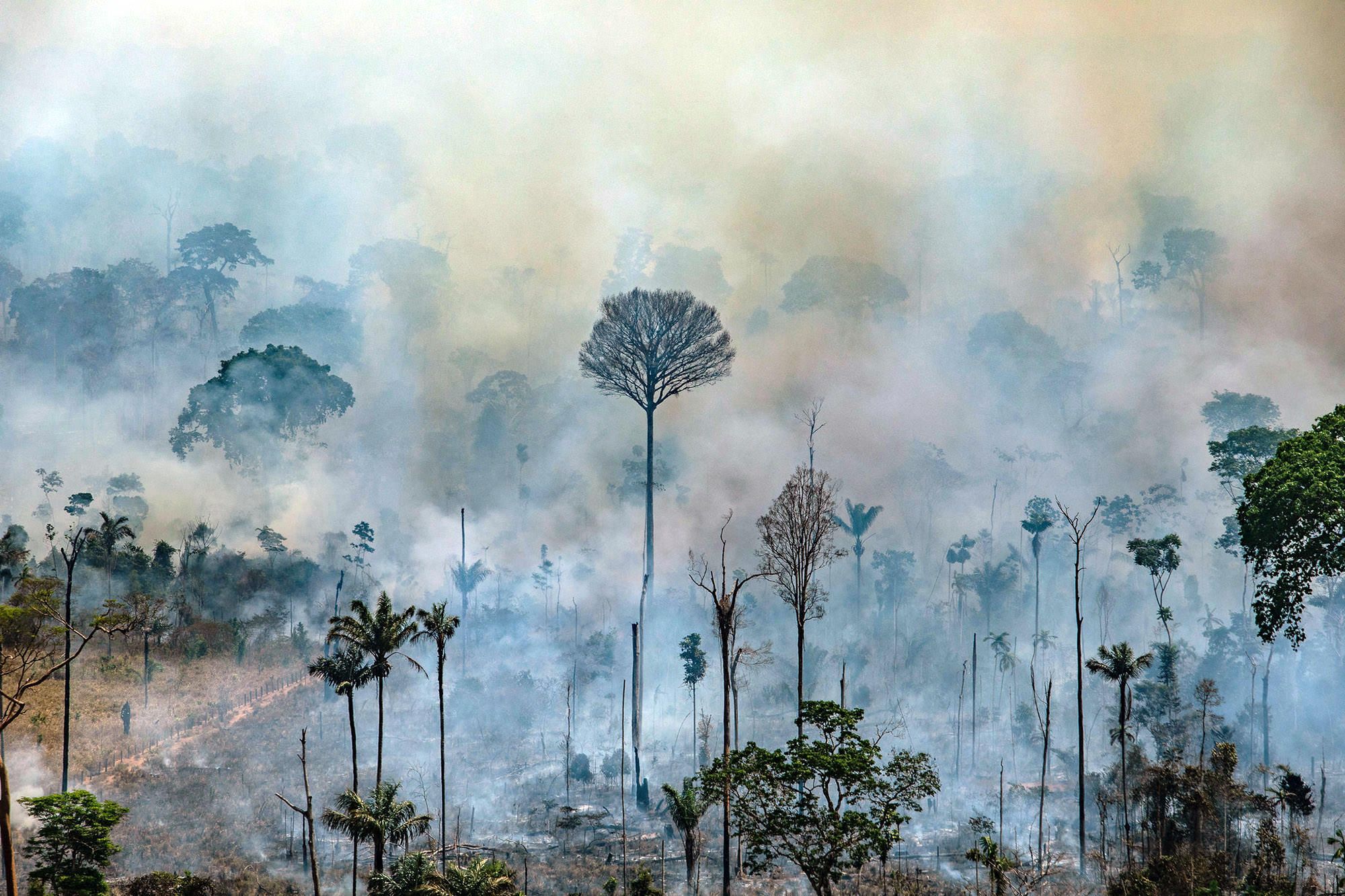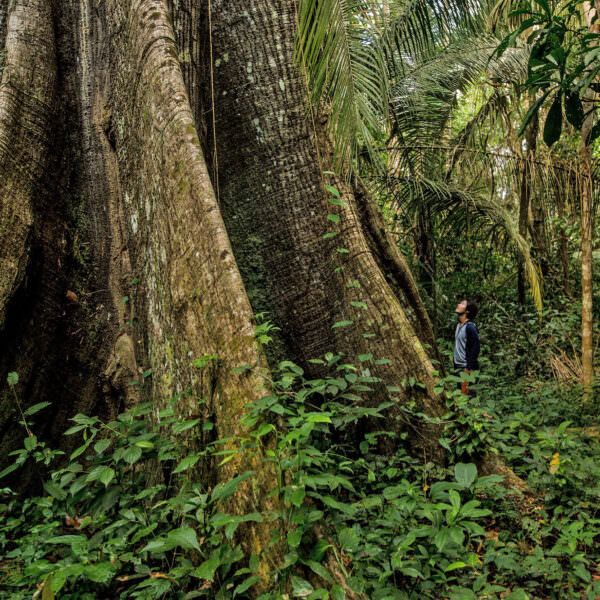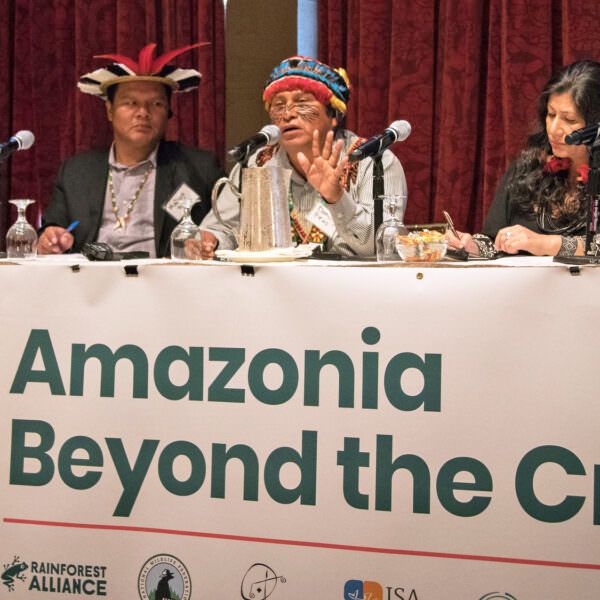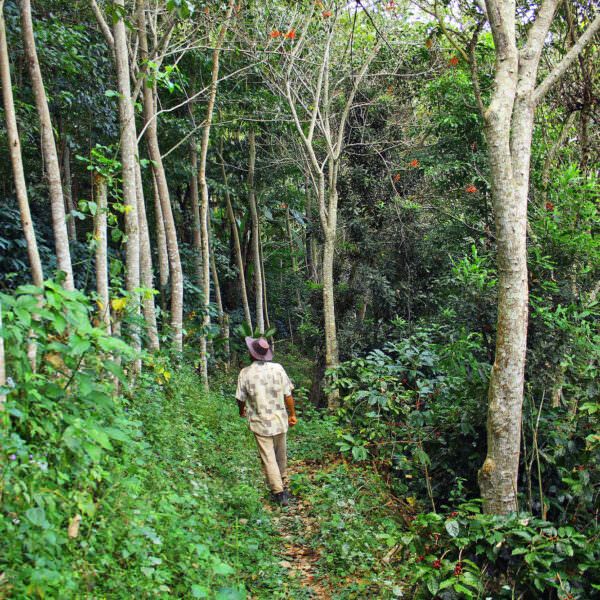The Rainforest Alliance's Work in Peru
Peru: Where indigenous knowledge, climate science, and global markets meet.
Spanning nine South American countries and 7 million sq km (2.7 million square miles), the Amazon is the world’s largest forest and is home to more than 120 indigenous groups and one in 10 known species. One-fifth of all freshwater on the planet originates in the Amazon Basin. Unparalleled in its biodiversity, the Amazon is also critical to global climate stability.

Humans have razed some 20 percent of the Amazon rainforest over the last 40 years alone, and an additional 20 percent is at risk of being destroyed—a potentially catastrophic loss that would cause this vital ecosystem to unravel. Read our response to the forest fire crisis in the Amazon.
The most important impact of our work in high-risk regions of the Amazon—self-determination—is not quantifiable. However, we continually gauge the success of our approach by measuring both ecosystem health and the economic and social well-being of our partner communities.
![]()
in Brazil nuts exported from Madre de Dios, Peru
After working with the Rainforest Alliance for four years, communities in the Madre de Dios region of the Peruvian Amazon exported more than 4,000 metric tons of shelled Brazil nuts, representing a value of nearly US $31 million. Read the study
![]()
under sustainable management in South America
We’re working with forest communities, farmers, governments, and companies to conserve the Amazon Basin and protect its precious biodiversity. Together with our partners, we’ve brought 18 million acres (7.3 million hectares) under sustainable management.
This number includes Rainforest Alliance Certified agricultural land and FSC certified forest land, including land certified by our Brazilian partner, Imaflora. Data accurate as of March 21, 2018.
Stopping deforestation in the Amazon requires bold, multi-faceted strategies that center indigenous forest communities and support their self-determination. This approach characterizes our work in the Amazon, where we work with a wide range of communities and partners to cultivate a sustainable forest economy.

Peru: Where indigenous knowledge, climate science, and global markets meet.

Together with our allies, we have drafted a call to action to save the world’s largest and most important rainforest.

A family transformed their coffee farm into a resilient landscape—and improved their income.

Este documento permite que os auditores desenvolvam uma auditoria que contemple a correta interpretação e avaliação dos requisitos 5.4 Salário digno, onde na primeira instância da guia desenvolve uma conceituação básica sobre o salário digno no Brasil, sua avaliação dentro da certificação e regulamentos aplicáveis, permitindo ao mesmo tempo que os produtores compreendam a implementação […]

This document enables auditors to prepare an audit in which the correct interpretation and evaluation of topic 5.4 Living Wage is included, first, the guide develops a basic concept of the living wage in Ecuador, its evaluation within the certification and applicable regulations at the same time will allow producers to understand the implementation and […]

The Rainforest Alliance has a long history working alongside Indigenous Peoples, partnering with Indigenous organizations and communities in some of the world’s most ecologically and culturally significant landscapes, including the Amazon basin. Our teams of field professionals have built enduring relationships and co-design sustainable development programs that center Indigenous Peoples as the foremost guardians of […]

Alyssa Killingsworth will apply her background in interdisciplinary environmental research and forest restoration to examine the effectiveness of Polylepis restoration efforts in the upper Andes in Ecuador. ... Continue Reading

The Rainforest Alliance and partners have worked in coffee for nearly four decades. While there are still challenges in the sector, we’ve also seen great improvements. In Colombia, the vast majority of coffee producers are smallholders, many with less than one hectare of land. Limited land size and economic opportunity make it very challenging to […]

The Rainforest Alliance and partners have worked in coffee for nearly four decades. While there are still challenges in the sector, we’ve also seen great improvements. In Brazil, many farms are large and modernized with high productivity. Though incomes are relatively high, many farms rely on expensive and volatile input costs. Our research shows that […]